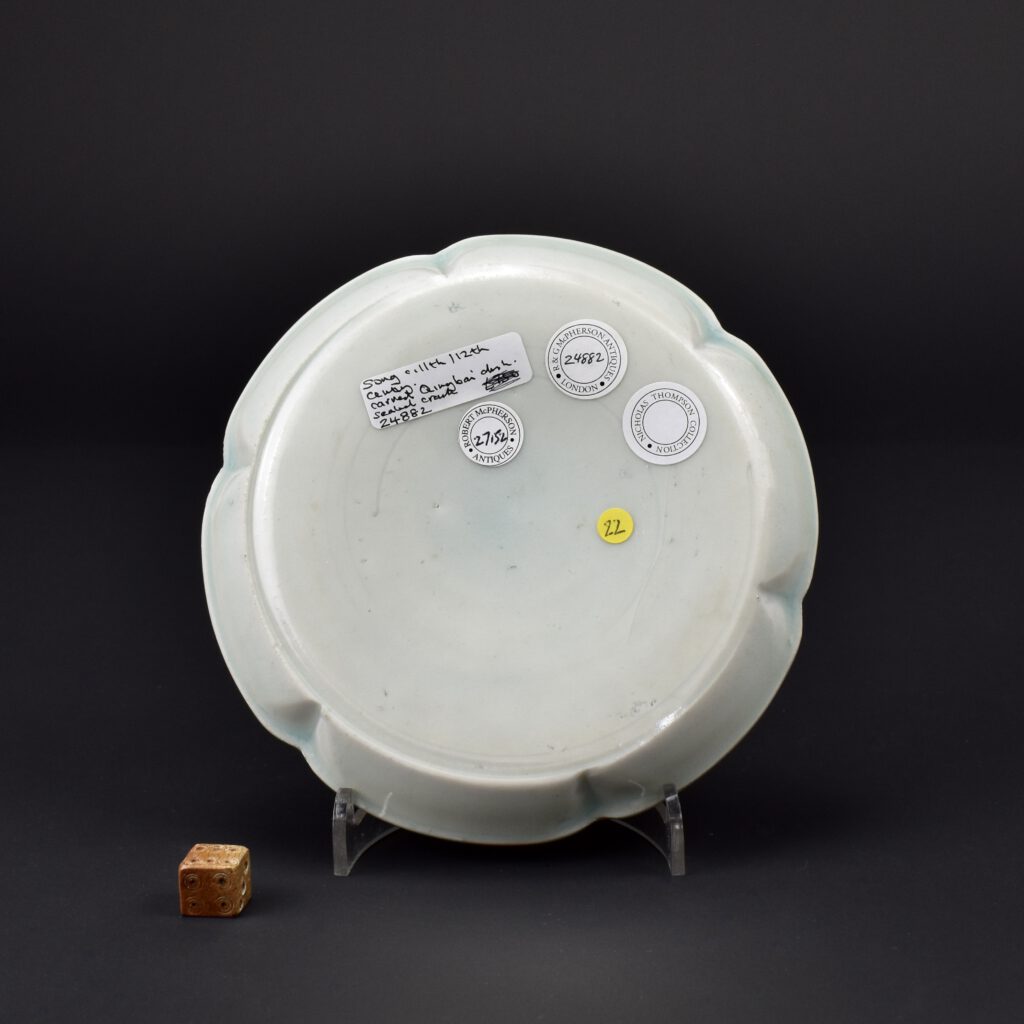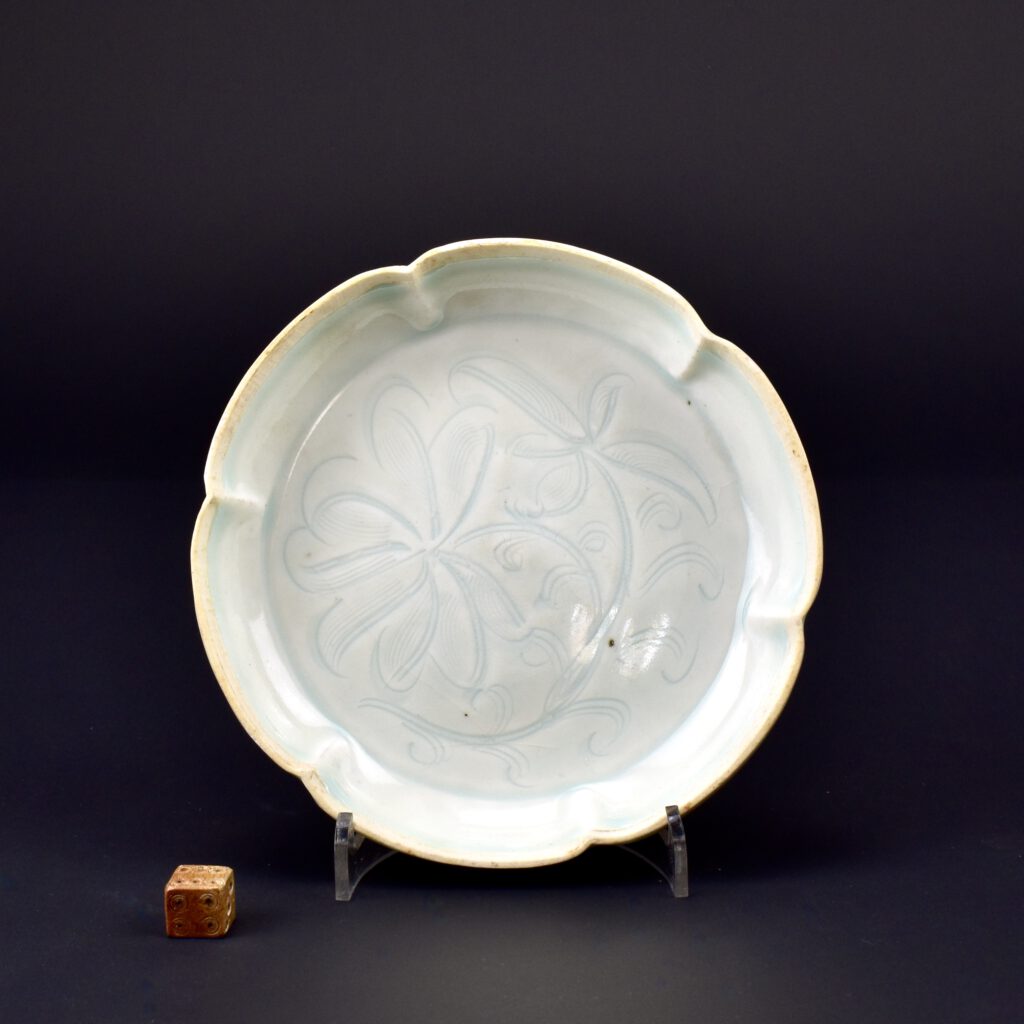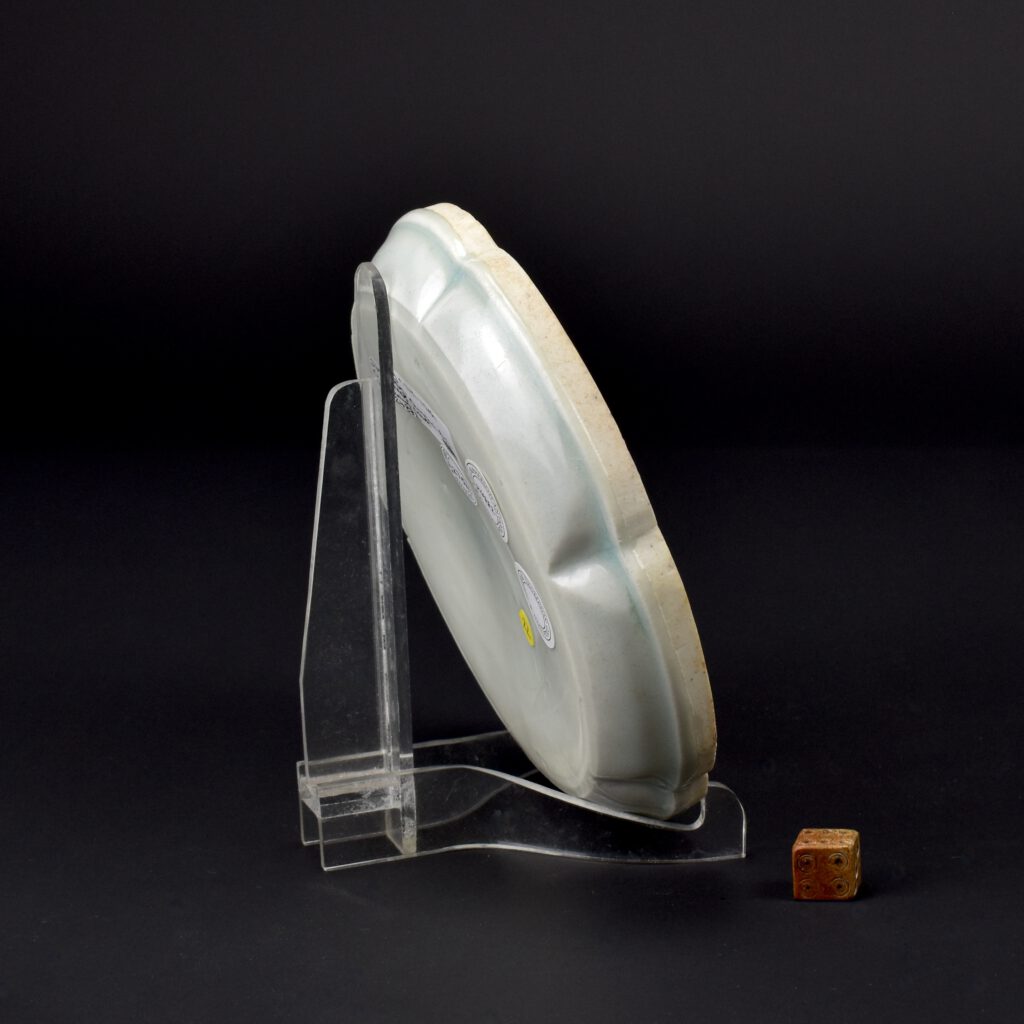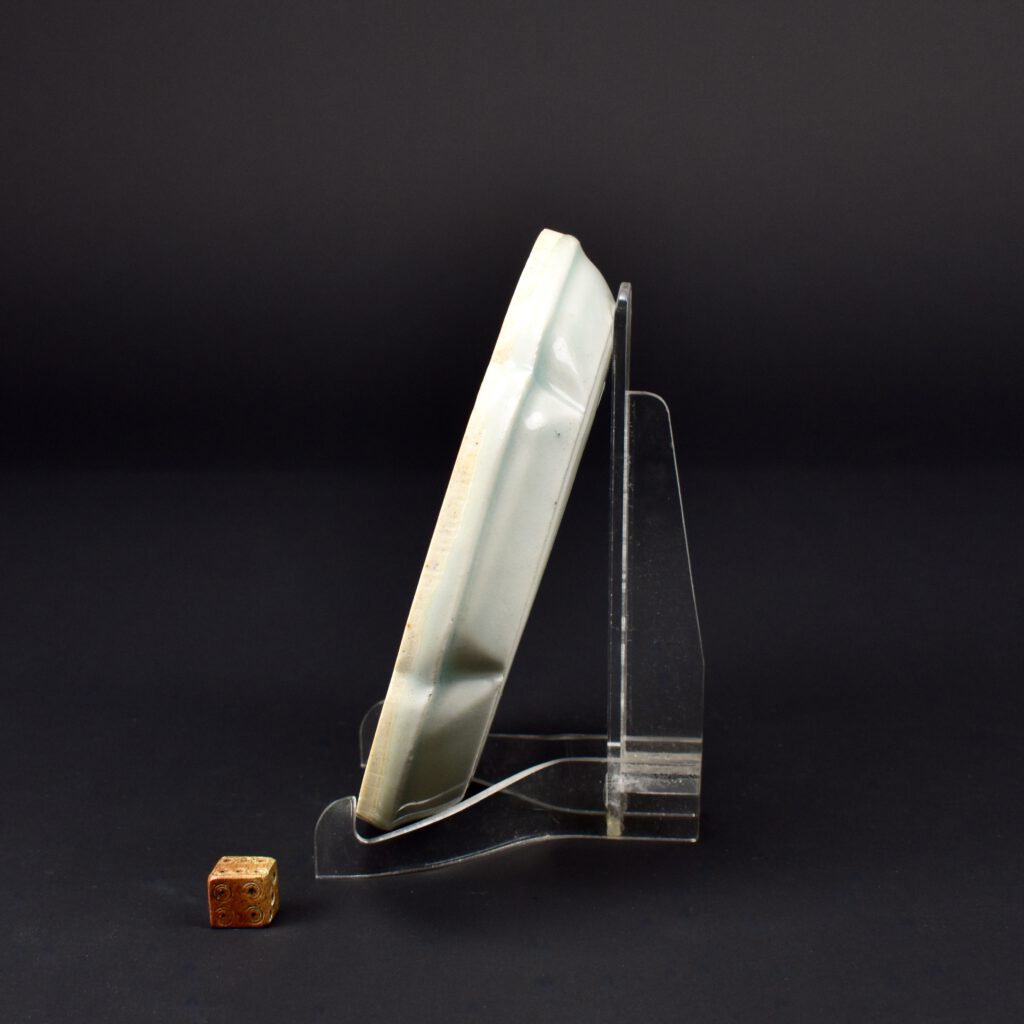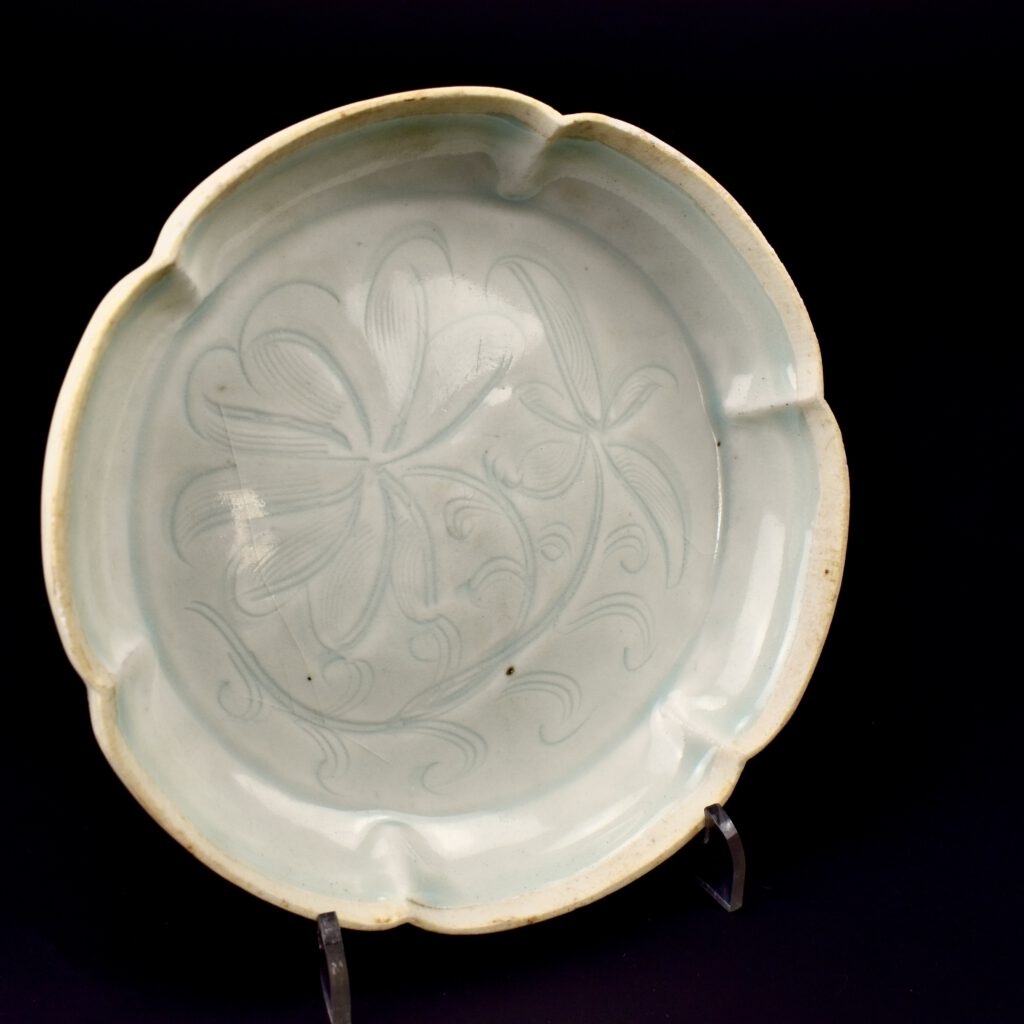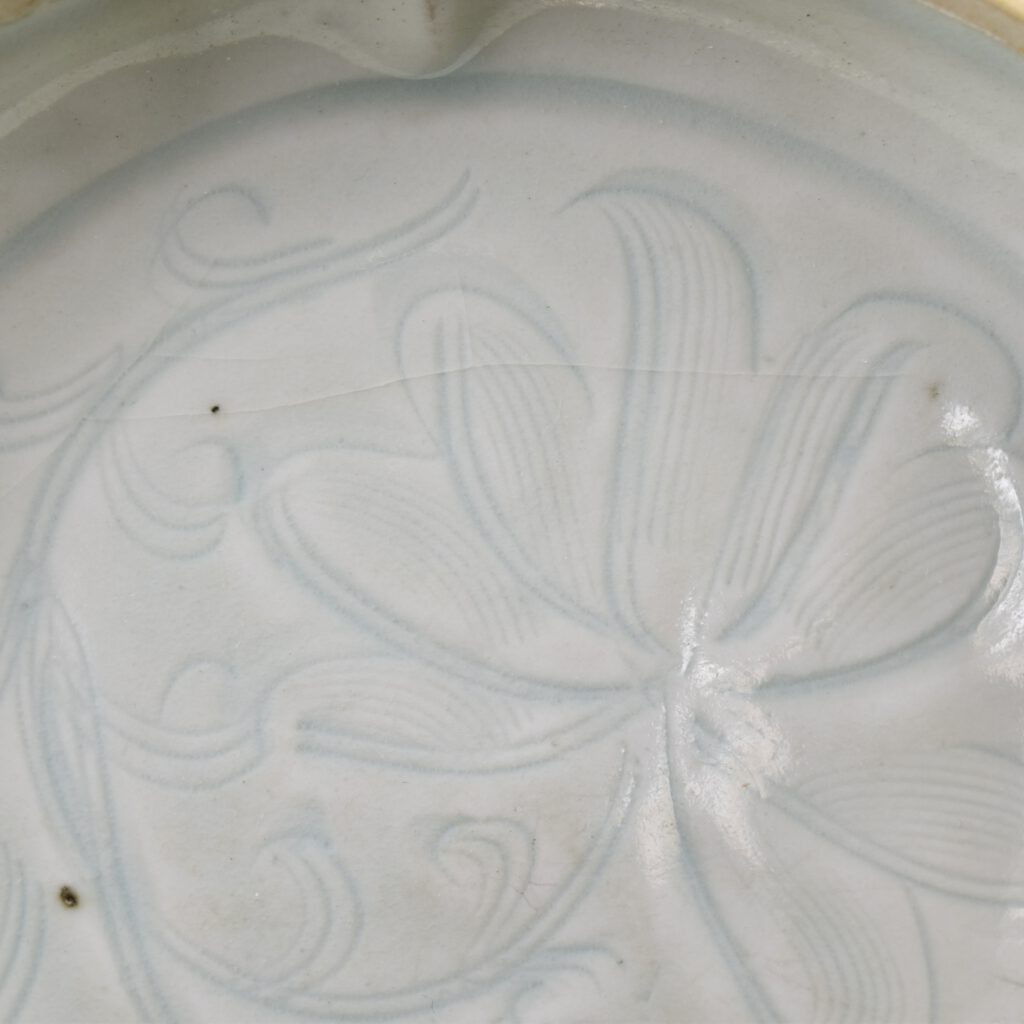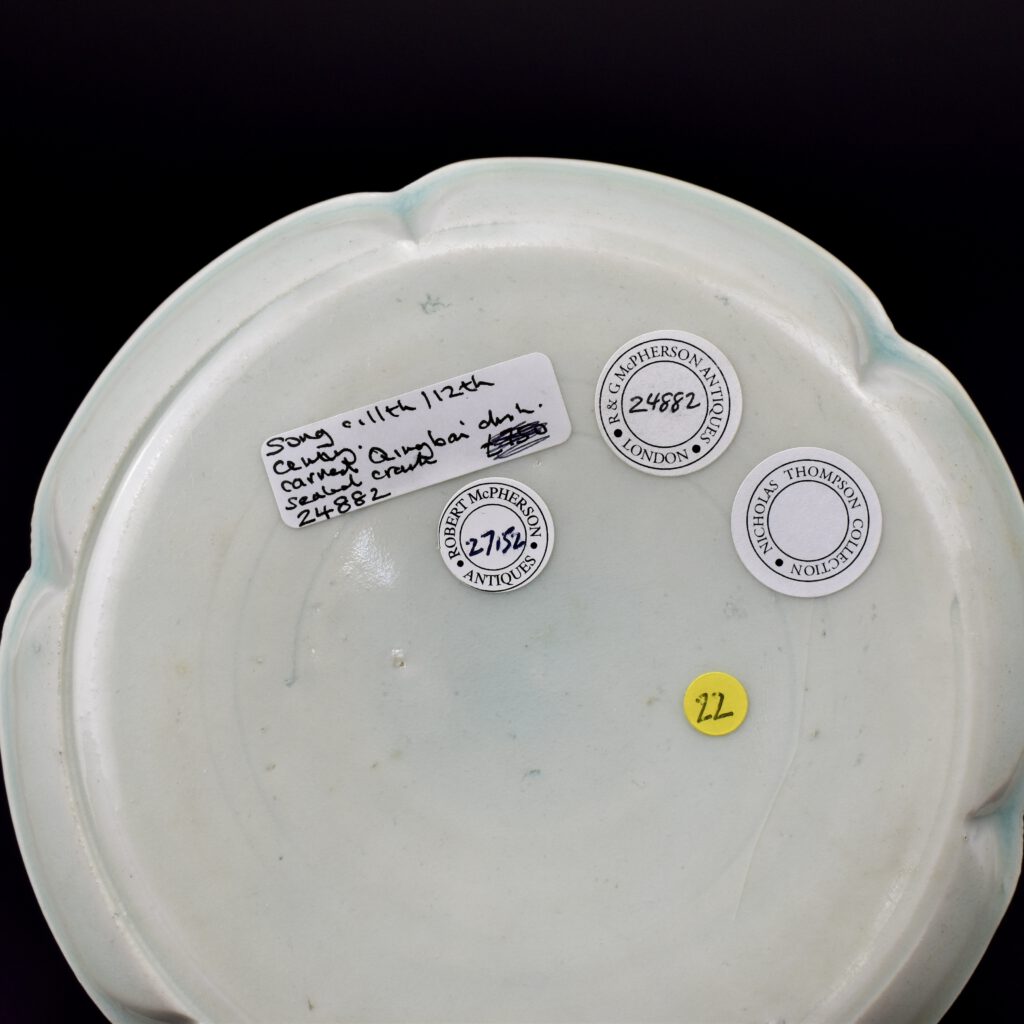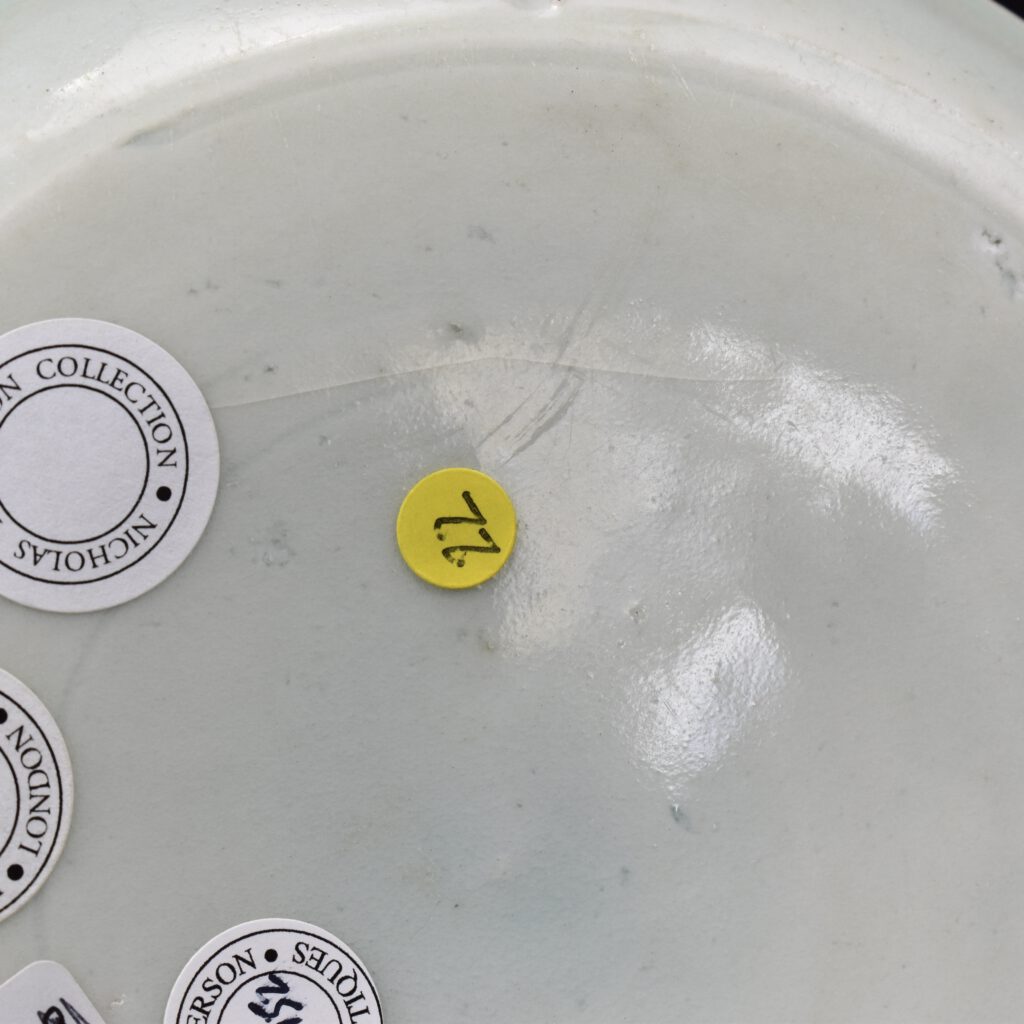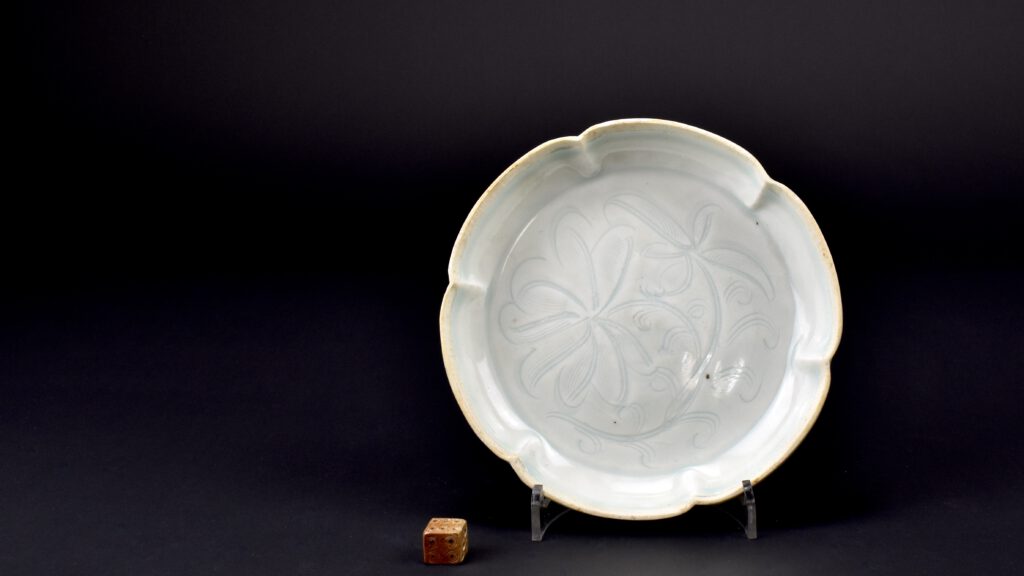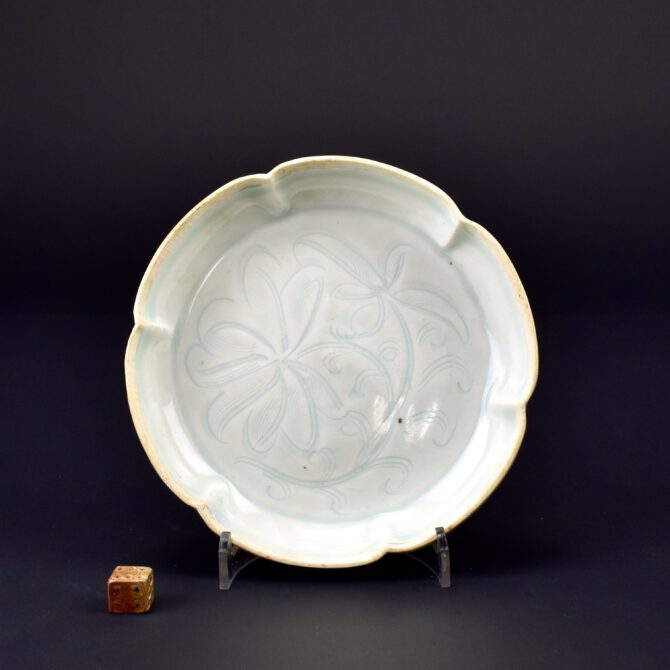
A Finely Potted Carved Song Qingbai Lotus Dish
A Fine Song Qingbai Porcelain Dish, probably from the Hutian kilns, Jingdezhen, 11th or 12th Century. This indented flower shaped dish with an unglazed rim that would have been protected by a metal rim is typical of Qingbai dishes of the period. It is incised with quick confident marks, depicting flowering lotus. This shallow Qingbai dish was produced at one of the best kilns in Jingdezhen, most likely the Hutian kilns. Lotus is one of the most important symbols in the Chinese art. This Buddhist emblem is a symbol of purity, as the perfect pure flower grows out of muddy ponds without a stain or blemish.
The earliest known qingbai wares were produced in Jingdezhen in Jiangxi province around the late 10th century and are characterized by faint pale-blue glazes on low, wide forms. Qingbai continued to be enormously popular and highly produced throughout the Song dynasty (960-1279) and was prevalent in the Yuan dynasty (1279-1368), but slackened during the Ming dynasty (1368-1644) until being replaced by tianbai, ‘sweet white’ ware. The initial forms of qingbai were simple bowls and dishes, but by the mid-Northern Song the forms had advanced to include a wide variety of objects used for daily life such as ewers, boxes, incense burners, granary models, vases, jars, sculptures, cups, cupstands, water droppers, lamps, grave wares, and tools for writing and painting. The precedent for the majority of these forms is found in earlier metalwork and lacquer and Rawson has suggested that the imitation of silver was the primary force behind the production of white wares, including qingbai. See our `History` section for more information about Song Porcelain and Stoneware by Mindy M. McDonald.
See below for more photographs and references.
SOLD
- Condition
- There is a body crack. See additional photographs below.
- Size
- Diameter : 14.2 cm (5 1/2 inches). Depth 2.2 cm.
- Provenance
- Nicholas de la Mare Thompson (1928-2010).
- Stock number
- 27152
Information
Qingbai Ware :
The earliest known qingbai wares were produced in Jingdezhen in Jiangxi province around the late 10th century and are characterized by faint pale-blue glazes on low, wide forms. Qingbai continued to be enormously popular and highly produced throughout the Song dynasty (960-1279) and was prevalent in the Yuan dynasty (1279-1368), but slackened during the Ming dynasty (1368-1644) until being replaced by tianbai, ‘sweet white’ ware. The initial forms of qingbai were simple bowls and dishes, but by the mid-Northern Song the forms had advanced to include a wide variety of objects used for daily life such as ewers, boxes, incense burners, granary models, vases, jars, sculptures, cups, cupstands, water droppers, lamps, grave wares, and tools for writing and painting. The precedent for the majority of these forms is found in earlier metalwork and lacquer and Rawson has suggested that the imitation of silver was the primary force behind the production of white wares, including qingbai. See our `History` section for more information about Song Porcelain and Stoneware by Mindy M. McDonald.
Lotus :
The lotus is one of the most important symbols in the Chinese art. This Buddhist emblem is a symbol of purity, as the perfect flower grows out of muddy ponds without a stain. The words for lotus in Chinese has the same meaning as to bind, connect (in marriage). In connection with 'boys' the meaning conveys a fruitful marriage with children. It is one of the Eight Auspicious Symbols of Buddhism and is the flower used to represent summer.
